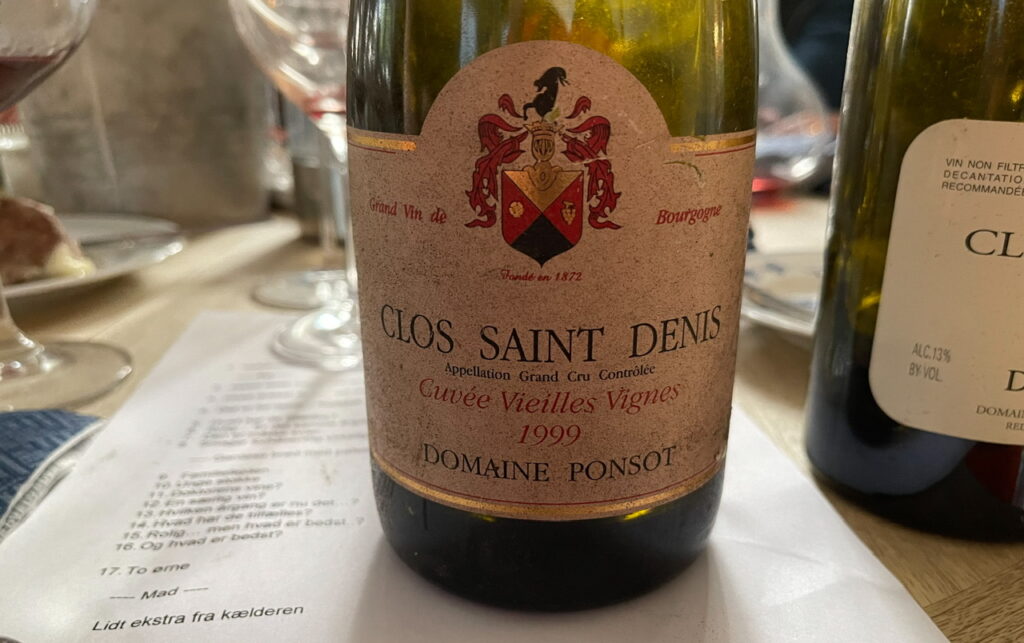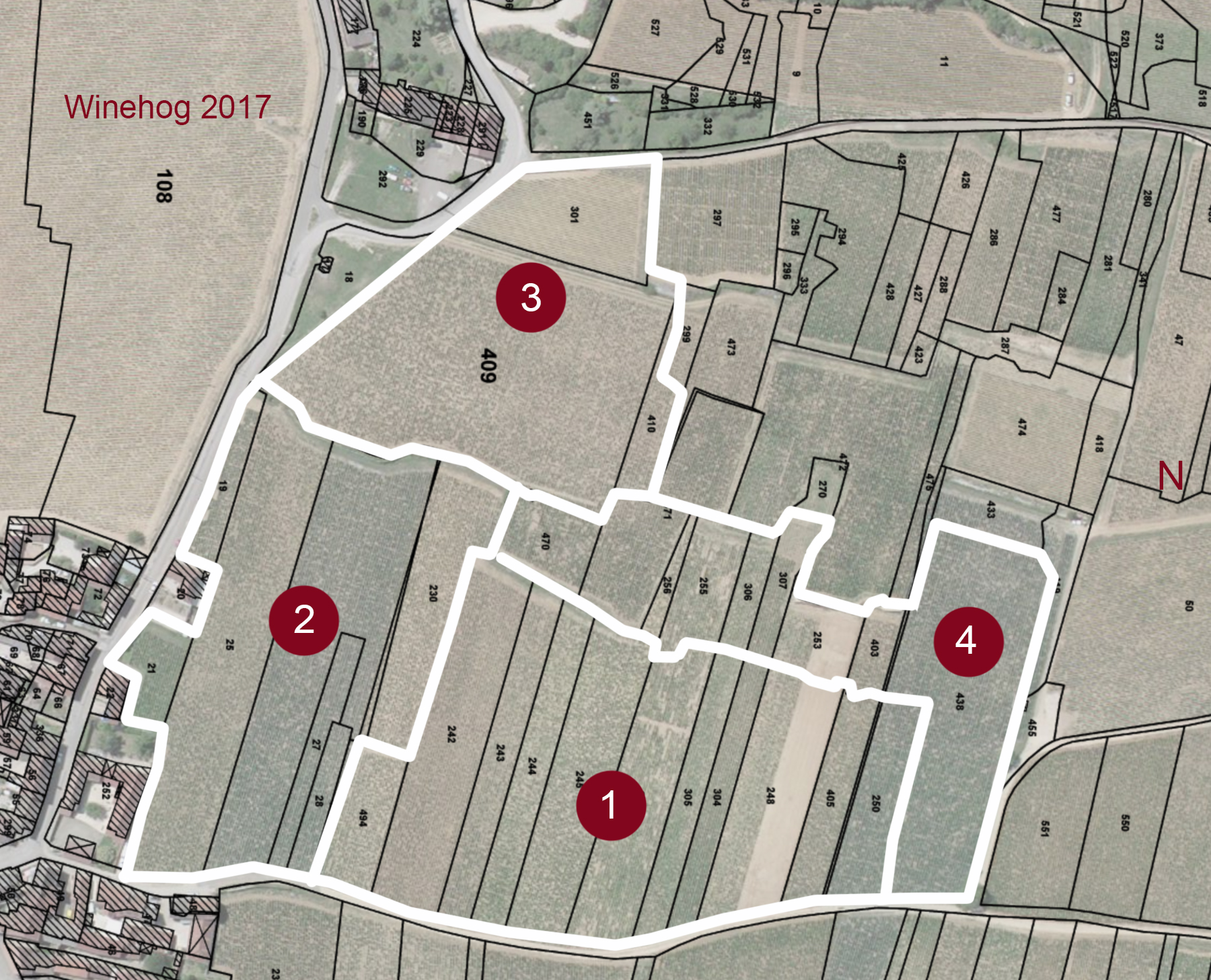The Clos Saint-Denis from Domaine Ponsot is one of the most famous and notorious wines in the world. This was the very wine that got Rudy Kurniawan exposed as a counterfeiter in the wine world when he attempted to sell bottles of the Ponsot Clos Saint-Denis produced prior to 1982 …
The problem is, well, Domaine Ponsot did not produce Clos Saint-Denis before 1982! But hey, everybody makes mistakes, right?

The complex Burgundy
The vineyard plot we are talking about is the Clos Saint-Denis plot, previously owned by Domaine des Chézeaux and now sold to Charles Van Canneyt at Domaine Hudelot-Noëllat.
Burgundy is often extremely complex due to the different ownership structures and métayage agreements which further cloud the picture.
The sale of a complex estate like Domaine des Chézeaux certainly creates a lot of issues and even legal matters that can be very tedious regarding the vineyard ownership or rental.
Domaine de Chézeaux was sold to Domaine Hudelot-Noëllat in 2021, and this sale is now unfolding according to the very complex rules of Burgundy. This is indeed complex as there were no less than three métayage agreements linking other producers to the Domaine des Chézeaux vineyards.
Currently, I only know part of the situation and timeframe for the unfolding of this sale, and will therefore focus on who currently makes the wines from the plots. I will then update as more information becomes available.
In this article, we are talking about the old Domaine des Chézeaux plot on Clos Saint-Denis, and then, will start out to unfold the ownership history of this very attractive plot.
The Domaine des Chézeaux plot is seen by some as the best plot on Clos Saint-Denis with its more than 100-year-old vines … Très Vieille Vigne …
Domaine des Chézeaux … a bit of history
The origin of Domaine des Chézeaux dates back to 1928 when the Mercier family established itself in Gevrey-Chambertin.
The Mercier family had a very fine portfolio of vineyards with plots in Le Chambertin, Clos Saint-Denis, Griotte-Chambertin, Chambolle Les Charmes, Gevrey-Chambertin Laveaux-Saint-Jacques, Gevrey-Chambertin Les Cazetiers and Gevrey-Chambertin village.
The entirety the vineyards were leased to other vignerons – Ponsot had Le Chambertin, Clos Saint-Denis, and 57% of Griotte-Chambertin. The Chambolle Charmes vineyard was also leased to Domaine Ponsot, and the Gevrey 1er Cru and village vineyards to Domaine Berthaut in Fixin. The rest of the Griotte-Chambertin holdings – 43% – was leased to Domaine René Leclerc.
The métayage agreements ensured that Domaine des Chézeaux got wine from the vignerons, and these wines were then, for the most part, sold under the Domaine des Chézeaux label.
The name Chézeaux comes from the village terroir that is located just outside the estate buildings just north of the Château Gevrey-Chambertin.
Domaine Ponsot and Laurent Ponsot
The jigsaw puzzle really starts to explode when Laurent Ponsot decides to leave Domaine Ponsot, but not without the métayage agreements with Domaine des Chézeaux … and then matters became even more complex!
Ponsot split from Domaine Ponsot management in 2017, but is effective, at least partly, since the 2016 vintage.
Domaine des Chézeaux sold to Hudelot-Noellat
In 2021, the Mercier family decided to sell the vineyards to Charles Van Canneyt of Domaine Hudelot-Noellat. To my knowledge, all of the vineyards were included in the sale, and the legal and practical implementation of this sale is now unfolding.
A solution has been found with lesser Gevrey vineyards, and currently, the solution for the big Grand Cru vineyards is unfolding … a very complex and tricky deal, as Ponsot had the vineyards since 1982 in a métayage agreement.
Clos Saint-Denis from Domaine des Chézeaux
From 1982 to 2015, two wines were produced from the plot. Domaine Ponsot and Domaine des Chézeaux – the same wine bottled by Ponsot but labeled Domaine Chézeaux on the Chézeaux side of the harvest.
Please note that Ponsot wines were not produced before 1982 … this was the error that sent Rudy Kurniawan to prison as he tried to sell older vintages of Ponsot Clos Saint-Denis.
Domaine des Chézeaux was sold in 2021. I therefore don’t know what will happen with the métayage payment from Laurent Ponsot after this year – i.e. presumably normally 40% of the wines produced on the plots.
I have not yet been able to find out if the plot will return to Charles Van Canneyt now or in the near future … this is sensitive stuff.
Wines produced
| Vintage | Domaine Ponsot | Domaine des Chézeaux | Laurent Ponsot |
| 1982 – 2014 | x | x | |
| 2015 | x | x | |
| 2016 | ? | x | x |
| 2017 | x | x | |
| 2018 | x | x | |
| 2019 | x | x | |
| 2020 | ? | x | |
| 2021 | ? | x | |
| 2022 | ? | ||
| 2023 | ? | ||
| 2024 | ? |
Clos Saint-Denis the current vineyard
The total area of the vineyard is 6.62 ha according to my calculations. Clos Saint-Denis today consists of plots from 4 climates – Clos Saint-Denis, Calouére, Maison Brûlée, and Les Chaffots – all located on the upper northern side of Morey-Saint-Denis – see map below…

Please note that the border between Les Chaffots 1er Cru and Clos Saint-Denis is not 100% accurate – see the maps below for more details
In many cases, the borders between the vineyards are ancient and have remained unchanged for centuries. But in other cases where vineyards have been expanded, the borders between the vineyards become more complex, leaving the vignerons with irregular plots, and a part of a plot in one vineyard and the rest of the plot in another.
This is also the case with the border between the expanded Clos Saint-Denis, and the remaining part of Morey-Saint-Denis Les Chaffots.
The very detailed map below shows the current Clos Saint-Denis with all plots shown on the map. As mentioned, there are plots from four climates included in the current Clos Saint-Denis.
Plots from the following climats are today included in Clos Saint-Denis:
- Clos Saint-Denis – 2.1420 ha
- Maison Brûlée – 1.8425 ha
- Calouére – 1.3165 ha
- Les Chaffots – 1.3190 ha
It can be seen that Clos Saint-Denis absorbed the climates Calouére and Maison Brûlée, while it has taken a considerable chunk of Morey Saint-Denis Les Chaffots. The total area of Clos St. Denis today is 6.62 ha.

The decree below from 1944 shows that in total, 4.42 ha from the vineyards Calouére, Maison Brûlée, and Les Chaffots had been included in the Clos Saint-Denis thus expanding the total area to 6.562 ha – almost equivalent to the current size. However, the expansion presumably happened already in 1936 – but the decree pictured above is the only documentation I have been able to find.
The Domaine Ponsot plots on Clos Saint-Denis
You need to login as a Premium subscriber to read the rest of this article. If you are not a Premium Subscriber, use the subscribe function and sign-up.
Related articles
- Terroir Insight: Domaine Arlaud Clos Saint-DenisDomaine Arlaud is in my view one of the somewhat overlooked gems of Morey-Saint-Denis. But after tasting their rare yet truly delightful Clos Saint-Denis I decided to set focus on this estate. Domaine Arlaud offer a range of beautiful wines with a high drinkability and with quality increasing year by year. So let’s take a closer look ...
- Visit to Domaine Arlaud – Tasting the 2021s from CaskIn Burgundy and elsewhere, 2021 was a cool and frosty year. Despite using fire and circulating fans in the vineyards, the results of the April frost and summer rains were low yields and serious challenges with the health of the grapes. Domaine Arlaud, however, has done remarkably well, producing pure, vivid, and delightful wines. Lovely wines ...
- Visit to Domaine Arlaud – tasting the 2020s from caskI am back at Domaine Arlaud, tasting the 2020s just three months after enjoying the 2019s from bottle. There’s no reason to repeat Arlaud’s story here, as it is available and up to date in the article about the 2019s. Photo from March 2021 Just one reminder: Domaine Arlaud is certified both BioDyvin and Agriculture Biologique (AB). It ...
- Visit to Domaine Arlaud – tasting the bottled 2019sDomaine Arlaud is producing some magnificent wines, and year by year the connoisseur’s awareness of them increases. Arlaud is both organically and biodynamically certified, and despite the slowly but surely increasing renown of this estate, it is still somewhat under the radar. How long will that last? The low-key domaine is located in a relatively ...
- Brandis Tasting – the delightful 2017 vintageDomaine Brandis, with Tom Brandis at the wheel, is one of Denmark’s main Burgundy importers. In early November, Tom held his large Wine Festival with a very fine lineup of delightful producers – French, German, Italian; you name it, they were there. A very, very rare bird I had a short splash and dash at this tasting, as I ...


 - A true vin d’émotion – a Burgundy of passion
- A true vin d’émotion – a Burgundy of passion - A truly hedonistic wine – lively and enjoyable
- A truly hedonistic wine – lively and enjoyable - A vivacious wine for pure indulgance
- A vivacious wine for pure indulgance - A potential vin d´émotion - frais et léger
- A potential vin d´émotion - frais et léger